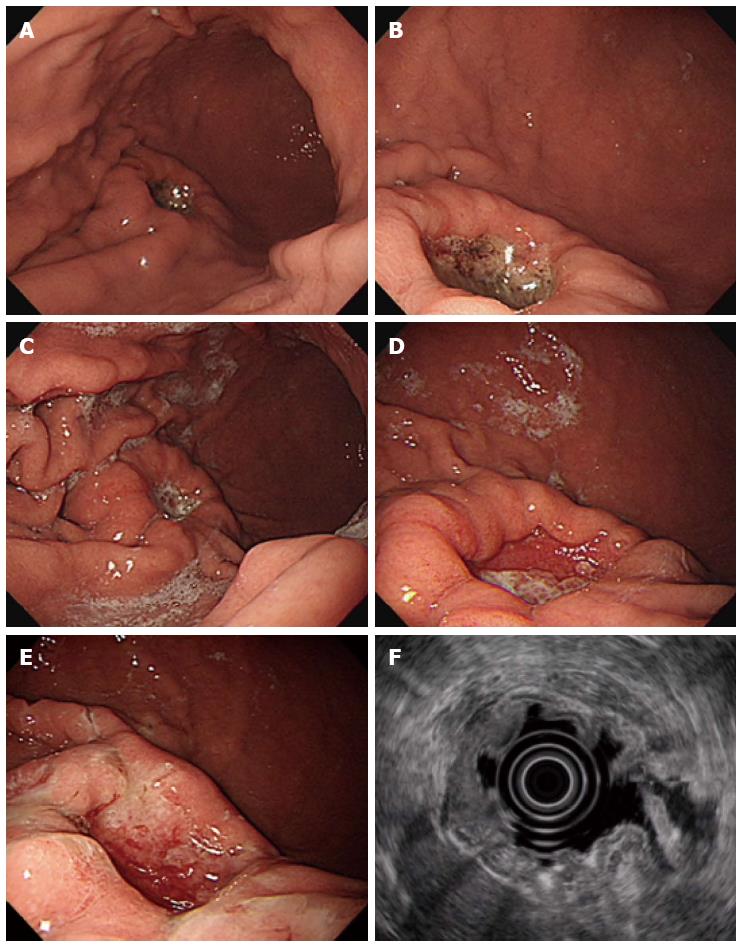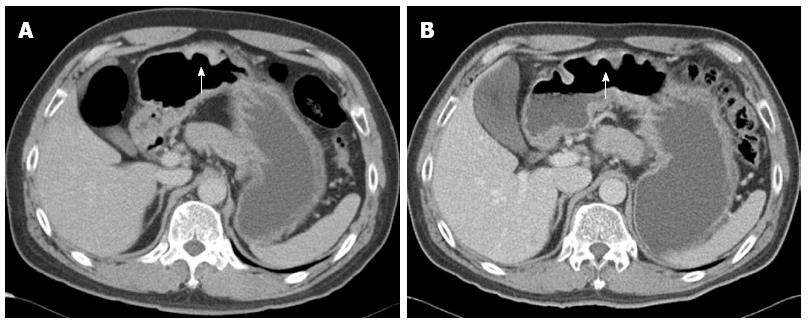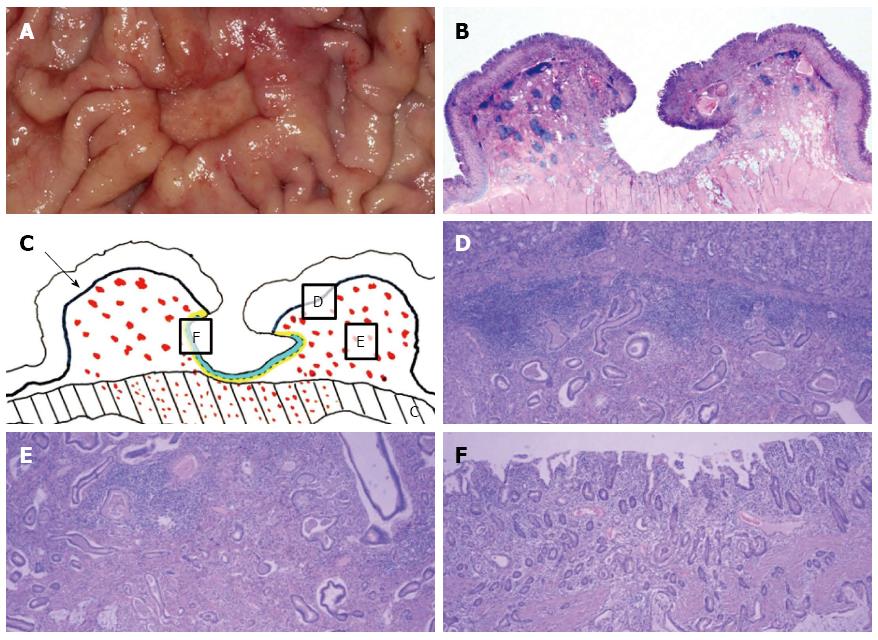Copyright
©2014 Baishideng Publishing Group Inc.
World J Gastroenterol. Jul 28, 2014; 20(28): 9621-9625
Published online Jul 28, 2014. doi: 10.3748/wjg.v20.i28.9621
Published online Jul 28, 2014. doi: 10.3748/wjg.v20.i28.9621
Figure 1 Esophagogastroduodenoscopy and endoscopic ultrasonography findings.
A, B: Initial esophagogastroduodenoscopy (EGD) finding. A 2 cm x 2 cm-sized, deep round ulcer, with an elevated thick and fused mucosal fold at the greater curvature side of the lower body; C, D: EGD finding three weeks later. The gastric ulcer was still noted, without discernible change. Some regenerating tissue was found at the ulcer base; E, F: EGD and ultrasonography (EUS) findings three months later. EGD still showed a large ulcer that had not grossly changed since the last EGD. On EUS, the mucosal, submucosal and muscular layer of the stomach were involved in the ulcerative lesion, and the serosa was focally abutted.
Figure 2 Abdominal computed tomography findings.
A: Initial computed tomography (CT) finding: a 3 cm ulcerofungating lesion at the lower body, without enlarged lymph nodes, was observed; B: CT finding three months later: a 3 cm ulcerofungating lesion in the gastric body, without definitive change since the last exam, including in the lymph nodes.
Figure 3 Gross surgical specimen and microscopic findings with reconstruction mapping.
A: Gross specimen. A deep round ulcerofungating lesion among the gastric folds with focal fold conversions; B: Gross histopathologic finding for a coronal section (hematoxylin and eosin stain, × 1). The large ulcer was covered with superficial regenerative epithelium, and bunches of cancer cells were scattered below the epithelium; C: Reconstruction mapping. The four solid lines separate the mucosa, submucosa, muscularis propria and serosa. The thick solid line is the muscularis mucosa layer (arrow). The red dots indicate cancer cells. The dotted line is an imaginary line that separates regenerative epithelium from the submucosal layer. Above this line, the light blue area is a regenerative epithelial area. Underneath, there is yellow area in which no cancer cells are found; D-F: Each figure corresponds with a part of Figure 3C (hematoxylin and eosin stain, × 40). Multiple cancer cells were noted in the submucosa, muscle and serosa. However, there were no cancer cells in the mucosal layer in the ulcer, including at the margins and base of the ulcer.
- Citation: Hur J, Chang JH, Kim BK, Ko HY, Lee JH, Kim SJ, Song MA, Kim TH, Kim CW, Han SW. Undiagnosed Borrmann type II gastric cancer due to necrosis and regenerative epithelium. World J Gastroenterol 2014; 20(28): 9621-9625
- URL: https://www.wjgnet.com/1007-9327/full/v20/i28/9621.htm
- DOI: https://dx.doi.org/10.3748/wjg.v20.i28.9621











